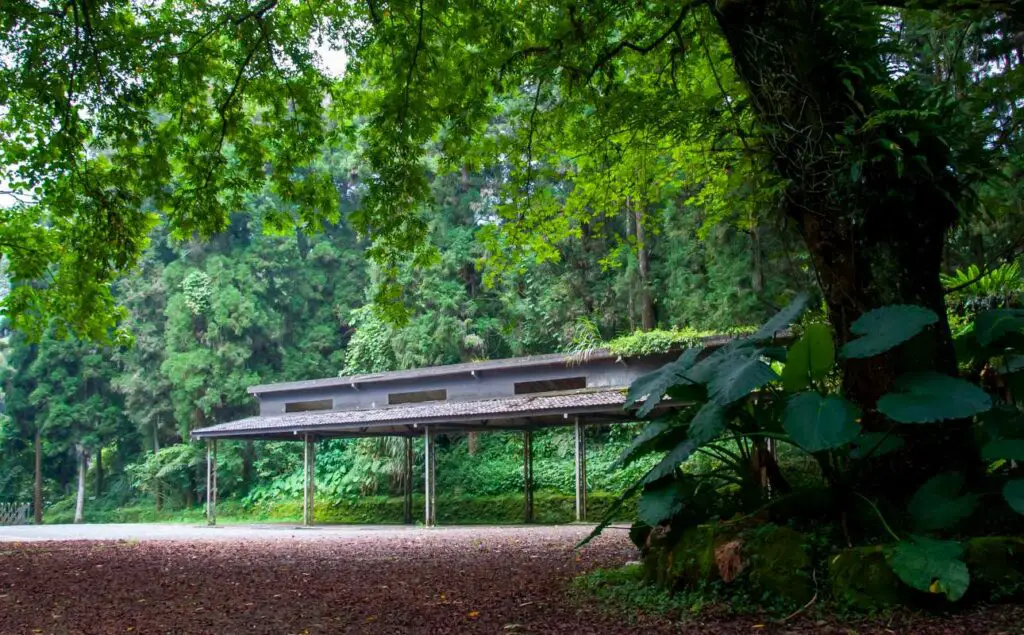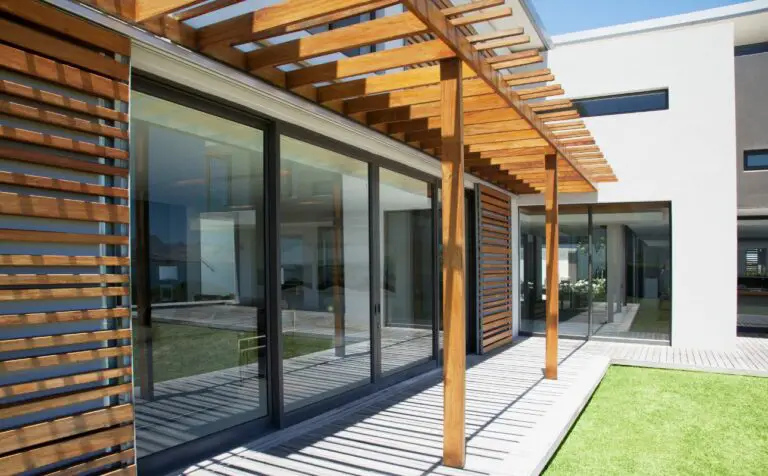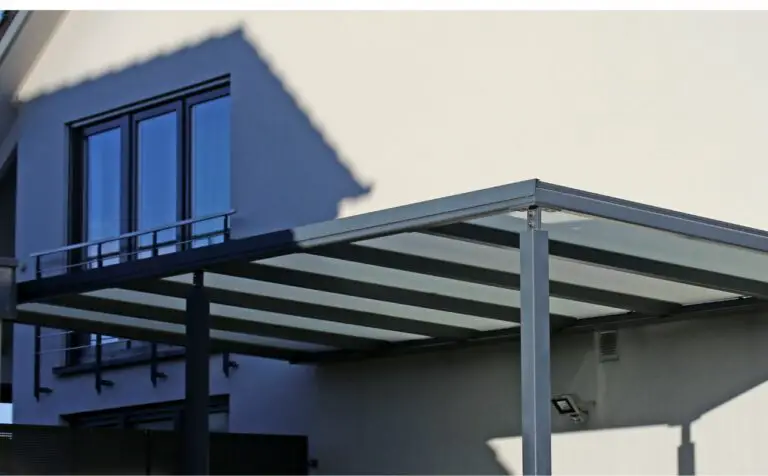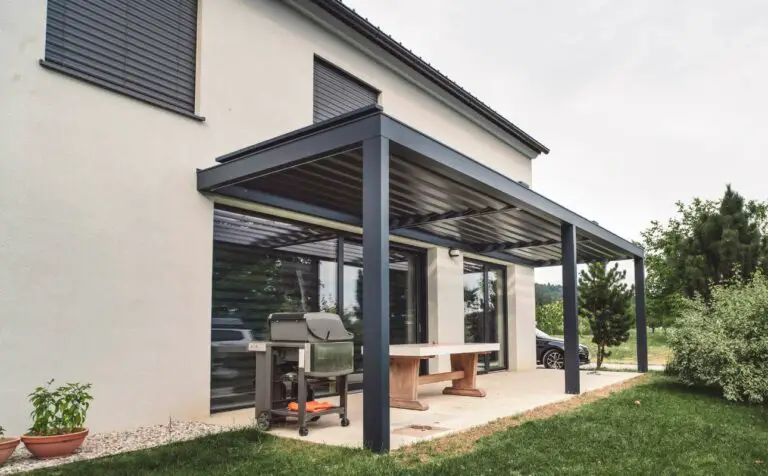Can You Put A Carport On Grass? (Helpful Guide)
Carports are an easy and inexpensive way to protect your car from the weather, but where should you put one? Putting a carport on grass may seem like an easy option for people who have a lot of yard space.
But before installation, it is important to think about a few things that can affect how stable the building is and how long it will last. First, you need to figure out what kind of grass you have in your yard. Some types of grass are stronger than others and can take big weights without getting hurt.
Also, the ground must be taken into account, since an uneven or rocky surface could make placement difficult. In this piece, we will go into detail about these things and talk about how to get your yard ready for the best carport placement on grass.

Consider the Type of Grass
When installing a carport on grass, it is important to consider the type of grass you have. Different types of grass have varying characteristics and tolerances to weight, traffic, and environmental conditions. Here are a few factors to consider:
- Grass Type: Identify the species of grass in your lawn. Common types include Bermuda grass, Kentucky bluegrass, Zoysia grass, and St. Augustine grass. Each has different growth patterns, durability, and response to foot traffic.
- Root System: Grasses with shallow root systems may not withstand the weight and pressure exerted by a carport. Deep-rooted grasses like Bermuda grass or fescue tend to be more resilient.
- Traffic Tolerance: Some grasses are better suited to heavy foot traffic and vehicle loads. For example, Bermuda grass is known for its durability, making it suitable for carports. Kentucky bluegrass, on the other hand, is less tolerant of heavy use.
- Climate Adaptation: Consider the climate in your area and choose a grass type that thrives in those conditions. Different grasses have varying drought tolerance, shade tolerance, and temperature preferences.
- Maintenance Requirements: Grasses differ in their maintenance needs, including watering, mowing, fertilizing, and pest control. Ensure that the grass type you choose is compatible with your desired level of lawn maintenance.
- Soil Conditions: Soil quality and drainage can affect the health and growth of grass. Conduct a soil test to determine the pH level, nutrient content, and drainage capacity.
Evaluate the Ground Conditions
Examining the ground conditions is essential in determining whether a suitable foundation can be established for the proposed structure. The soil drainage and rainwater runoff should be evaluated to ensure that the carport won’t sink or become unstable over time.
Ideally, the ground should have good drainage and slope away from the carport to prevent water from pooling around it.
It’s also important to assess the stability of the soil by conducting a ground test or hiring a professional engineer to determine if any additional measures are needed, such as adding gravel or compacting the soil.
Determine the Size and Weight of Your Carport
Determining the appropriate size and weight of a carport structure involves careful consideration of various factors such as intended use, local building codes, and environmental conditions.
Before choosing a carport, it is important to check permit requirements in your area and ensure that the structure will meet those standards. Selecting an anchoring method for your carport is crucial to ensuring its stability and longevity.
Once you have determined the appropriate size and weight for your carport based on these considerations, you can move on to preparing the ground for installation.
Prepare the Ground for Installation
Proper preparation of the installation site is a critical step in ensuring that a carport structure is safe, stable, and able to withstand environmental conditions over time. Before installing a carport on grass, it is essential to assess the ground for any irregularities, such as slopes or dips, and address them accordingly.
There are different types of foundations available for carports; some require digging into the soil while others can be anchored onto concrete slabs or piers. Drainage solutions must also be considered to prevent water from pooling around or under the structure.
Maintenance and Longevity
Regular cleaning and maintenance are essential to ensure the longevity of a carport, regardless of its placement on grass or any other surface. However, installing a carport on grass can pose potential damage from grass growth and ground shifting that may require additional maintenance efforts.
Regular Cleaning and Maintenance
Cleaning frequency varies depending on factors such as weather conditions, usage frequency, and location. To maintain cleanliness, DIY cleaning methods can be used such as sweeping with a broom or using a pressure washer.
It is important to note that if left uncleaned, grass can grow under the carport structure causing potential damage from grass growth and ground shifting.
Potential Damage from Grass Growth and Ground Shifting
The stability of a carport can be compromised by the growth of grass and shifting of the ground, which may result in potential damage to the structure.
Grass maintenance is critical to prevent it from growing too tall and entangling with the carport’s supports or covering, which could lead to structural instability.
Moreover, soil erosion due to rain or other weather elements can cause uneven ground, resulting in further stress on the carport’s foundation. It is noteworthy that even minor shifts in the ground can eventually impact the overall stability of the structure over time.
Consideration of Future Upgrades or Changes
When considering the potential damage from grass growth and ground shifting, it is also important to take into account any future upgrades or changes that may be made to the carport.
A cost analysis should be conducted to determine if it would be more beneficial in the long run to lay a foundation for the carport instead of placing it on grass. Additionally, the aesthetics impact of a carport on grass versus a paved or concrete area should also be considered.
The Bottom Line
Installing a carport on grass is possible as long as certain considerations are made. Proper preparation of the ground for installation is also essential for longevity and stability.
Regular maintenance will prolong its lifespan and prevent damage from weather and other external factors. As with any construction project, attention to detail and careful planning will result in a successful outcome.
As the saying goes, ‘You can’t build a great building on a weak foundation.’ This metaphor applies perfectly when considering installing a carport on grass.
Just like how a strong foundation is necessary for any structure’s success, proper preparation and evaluation of the ground conditions are vital for ensuring that your carport stands tall and steady for years to come.
FAQ
Can I install a carport on uneven ground?
Installing a carport on uneven ground without proper leveling can cause damage to both the structure and the vehicles it houses, making it imperative to take necessary precautions before installation.
Alternative materials such as paving stones or concrete slabs can be used to provide a stable foundation for the carport. These materials offer long-lasting support and prevent sinking or shifting due to changes in weather conditions.
How can I protect the grass underneath the carport from damage?
Carports can cause damage to the lawn underneath if not properly protected. One effective method is to lay down a durable geotextile fabric before placing the carport on top. This creates a barrier between the carport and grass, preventing soil compaction, and reducing weed growth.
Another option is to use alternative foundation materials such as gravel or concrete pads. These materials provide a stable base for the carport while also allowing water drainage, which reduces runoff and prevents erosion.
Do I need a permit to install a carport on my grass?
Permit requirements for installing a carport on grass depend on the local zoning laws of the area. In some cases, obtaining a permit may be necessary to ensure that the installation process meets safety and building codes.
The installation process should begin with clearing and leveling the area where the carport will be placed. This involves removing any vegetation or debris, grading the ground, and ensuring proper drainage to prevent water buildup under the structure. Once this is done, anchors are typically driven into the ground to hold up the carport frame securely.
Can I install a carport on a slope or hill?
The installation of a carport on a slope or hill requires special consideration for the stability of the carport foundation. The slope must be evaluated to determine its angle and soil composition, as well as potential factors that can affect stability, such as heavy rainfalls or seismic activity.
A proper foundation must be established to prevent any sliding or shifting of the carport structure. This may include securing anchors into the ground or using concrete footings with reinforced steel bars to provide added strength and durability.
What is the average lifespan of a carport installed on grass?
The average lifespan of a carport installed on grass largely depends on the quality of materials used and proper maintenance. Proper installation is also crucial to prevent any structural damage or collapse due to soil erosion or shifting ground. With consistent upkeep and using durable materials, an estimated lifespan of 20-30 years for a carport installed on grass can be achieved.






